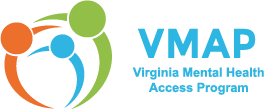Early Intervention in Pediatric Primary Care: Why It Matters
Early intervention is a phrase that gets thrown around a lot, but it's rarely explained in detail. We all know it's important and has a profound impact on children and their families, but what does it actually involve?
What is Early Intervention?
Early intervention is when children who are 6 years old or under are provided services designed to mitigate negative outcomes. These services are offered when a child is at risk for developmental delays, mental health conditions, or other such concerns. There are both long and short-term goals for early intervention.
- Short-term goals ensure that children have the essentials for their safety – secure housing, stable environment, and nutritious food.
- Longer term goals involve increasing IQ scores and improving school readiness.
Here are the 3 main types of early intervention services:
- Parenting Interventions: Involves providers, such as pediatricians or other primary care providers, offering advice to parents on how to create an ideal environment for their child's development within their particular circumstances. This typically necessitates providers taking continuing education training that prepares them for these conversations.
- Therapeutic Interventions: Includes any kind of therapy, including psychological, physical, occupational, speech, and more, that improves a child's quality of life.
- Family Interventions: Typically involves case management services, home visitations, or other services that work with the entire family to create a safe, positive environment for the child.
Even brief interventions can have significant effects on parenting approaches, which can positively affect the child in turn. All types of early interventions have demonstrated positive outcomes in improving a child's success, as measured by mental and physical health concerns, academics, and social functioning.
With 16% of children under the age of 6 facing mental health challenges that require intervention, such services are critical. Pediatric primary care is an ideal setting to initiate these interventions, since children will have an average of 14 well-child visits between ages 0 and 5. They are almost always accompanied by their parents, who are accustomed to providers giving them recommendations and referrals for their child.
How to Perform Early Intervention in Primary Care
1. Prepare yourself and other providers at your practice for parenting interventions
Whether you’re trying to prepare just yourself or your entire practice, there are several opportunities for pursuing continuing education in early childhood mental health and interventions.
- Triple P: The Triple P – Positive Parenting Program® is a parenting and family support system designed to help children realize their potential. As offered by VMAP, it’s designed for Virginia medical providers who work in primary care with early childhood patients and their families. You will learn how to teach simple and practical behavior management skills to support parents of your patients, including how to build healthy relationships with their child, confidently manage their child’s behavior, and prevent problems from developing. We only offer a few each year, so keep an eye out for open registration announcements!
- Early Childhood ECHOs: Every year, VMAP opens registration for our ECHO virtual learning cohorts. Each cohort has a specialized focus, and these no-cost education opportunities are designed for Virginia PCPs to learn critical, practical skills in pediatric mental health. In 2023 and 2024, we offered two early childhood cohorts:
-
- Birth to 5: A Deeper Dive: This VMAP ECHO cohort addresses infant and early childhood mental health concerns that arise in busy primary care practices. With a focus on neurodevelopmental factors and implications, each session teaches skills in early support and intervention.
-
- Early Childhood SOCKs: Systems of Care for Kids – In this VMAP ECHO cohort, learn about community-based interventions and referral options to direct your littlest patients and their families. Cohort participants can also do an optional QI project, which is focused on enhancing screening for early childhood developmental challenges and exploring opportunities for supporting the family.
- Zero to Three: This organization hosts professional development events throughout the year that are grounded in early brain science, infant and early childhood mental health, and more. They have many different options you can explore, and they also offer group trainings for your practice.
Some CME trainings may cover billing and diagnosis coding for early childhood social-emotional development, but we wanted to share AAP’s resource on this kind of coding. It also includes some case study examples that demonstrate how to effectively use this resource at your practice.
2. Consistently utilize appropriate screening tools
The American Academy of Pediatrics (AAP) recommends screening infants and toddlers for early intervention need at 9, 18, 24, and 30 months of age. Below are some of the approved screening tools for monitoring mental health, behavioral health, and developmental progress in early childhood. As a reminder, you don’t need to use all these screening tools! Pick one or two that work best for your patient population.
3. Support your patients and their families with early intervention services
Here are some of the top early intervention services that you can utilize for children and their families. Click here to see them listed based on area of need!
- Therapeutic Interventions: You’ve probably heard of Cognitive-Behavioral Therapy (CBT), Dialectical Behavioral Therapy (DBT), and other common therapies used for adolescents and adults. Unfortunately, these kinds of talk therapy aren’t always as effective for pediatric patients, especially during the early childhood stage, when communication is more difficult. Here are four evidence-based therapies for young children!
- Child-Parent Psychotherapy (CPP): for ages 0-5
- Trauma-Focused Cognitive Behavioral Therapy (TF-CBT): for ages 3-18; primarily for children with history of trauma
- Parent-Child Interaction Therapy (PCIT): for ages 3-7
- Child Parent Relationship Therapy CPRT): for ages 3-8; primarily for children with behavioral issues
- Family Interventions
- Healthy Steps: Includes screening for children’s social-emotional and behavioral needs and family needs; employs specialists to provide child development and family support. This service has been demonstrated to strengthen social emotional development and improve family knowledge of infant development.
-
- Reach Out & Read: An early literacy program focused on improving language acquisition and brain development. This program serves more than 4 million children each year, and partners with 40,000 pediatric clinics.
-
- Infant & Early Childhood Mental Health Consultation: A service that pairs an early childhood mental health specialist with families and a young child under five years old. The program aims to build the family’s capacity to strengthen and support their child’s development before further intervention is needed.
-
- Head Start: Aims to support children and families through establishing a safe and supportive environment at home. May involve the support of infant and early childhood mental health specialists.
-
- Maternal, Infant, and Home Visitations: Supports pregnant people and parents with young children who live in communities that face greater barriers to achieving positive maternal and child health outcomes. Primarily involves home visitation support, which serves to educate caregivers, observe the child and encourage their development, and connect the family to resources.
If you're still feeling apprehensive about employing early intervention in your daily practice, start with step one – education! Triple P and our Early Childhood ECHOs are a great way to build your confidence and understanding of early childhood mental health and interventions.




